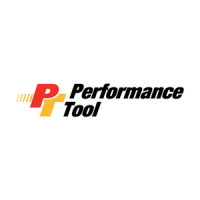5
1. To set the tool to desired torque, select a nut or screw of known tightness of the same
size, thread pitch and thread condition as those on the job.
2. Turn air regulator to low position, apply wrench to nut and gradually increase power (turn
regulator to admit more air) until nut moves slightly in the direction it was originally set.
The tool is now set to duplicate that tightness, note regulator setting for future use.
3. When tightening nuts not requiring critical torque values, run nut up flush and then
tighten an additional one quarter to one-half turn (slight
additional turning is necessary if
gasket are being clamped).
4. For additional power needed on
disassembly work, turn regulator to its
fully open position. This impact wrench
is rated at 5/8 USS bolt size. Rating
must be down graded for spring U bolts,
tie bolts, long cap screws, double depth
nuts, badly rusted conditions and spring
fasteners as they absorb much of the
impact power. When possible, clamp or
wedge the bolt to prevent spring back.
5. Soak rusted nuts in penetrating oil and
break rust seal before removing with
impact wrench. If nut does not start to move
in three to five seconds use a larger size
impact wrench. Do not use impact wrench
beyond rated capacity as this will drastically
reduce tool life.
Oil tool before each use. 4 to 5 drops of a good grade Air Tool Oil placed in the air inlet is
sufficient. Use proper air pressure and CFM rating listed for this tool.
Drain water from hoses and compressor tank. Water in the air supply line will cause
gumming and loss of power. Clean the air filter on the supply line and flush the tool with
gum solvent or a 50/50 mix of air tool oil and kerosene. It may be necessary to
disassemble the tool to properly clean and re-lubricate.
LUBRICATION & MAINTENANCE
Motor
Oil
Trans.
Fluid
Brake
Fluid
Water
Whip
hose
Air Tool
Oil
OPERATION
Air Inlet
Air
Regulator
Trigger

